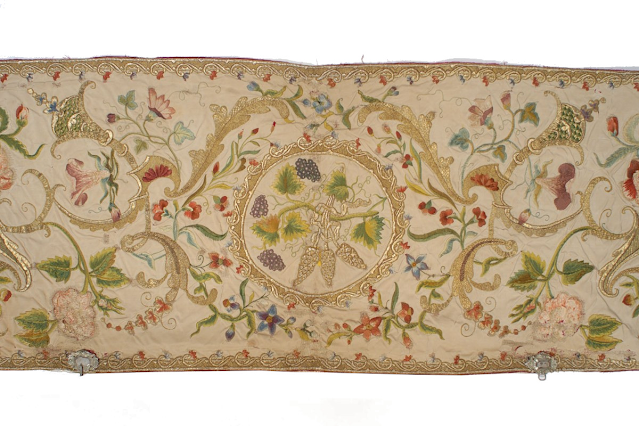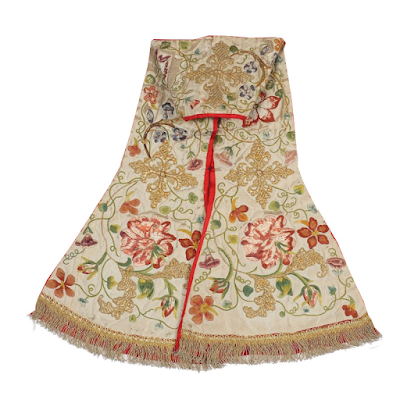The set includes a stemma, likely related to the aristocratic family to whose chapel it served or from whom the set was commissioned, though of greater and more unique interest is the inclusion on some of the vestments of an embroidered heart with flame and an arrow pierced through it. One night naturally think this comes with reference to the Immaculate Heart of Mary, but the text that is also embroidered on the heart suggests something different: "aut pati, aut mori."
Loosely translated this means something akin to "either to endure [suffering] or to die" and this text, along with the arrow-pierced and enflamed heart, is associated with the Spanish saint and mystic, Teresa of Avila and her ecstatic vision (often referred to as the Ecstasy of St. Teresa), which she described in these, her own words:
In his hands I saw a great golden spear, and at the iron tip there appeared to be a point of fire. This he plunged into my heart several times so that it penetrated to my entrails. When he pulled it out, I felt that he took them with it, and left me utterly consumed by the great love of God. The pain was so severe that it made me utter several moans. The sweetness caused by this intense pain is so extreme that one cannot possibly wish it to cease, nor is one's soul then content with anything but God. This is not a physical, but a spiritual pain, though the body has some share in it--even a considerable share. So gentle is this wooing which takes place between God and the soul that if anyone thinks I am lying, I pray God in his goodness, to grant him some experience of it.
Whether the inclusion of this text points to this vestment having a provenance directly related to the Carmelites is unknown, however, there were Discalced Carmelites in the Venetian region at this time, so it is certainly a possibility. One thing that is certain, whomever this vestment was commissioned by or for, they clearly had a strong devotion to the Spanish mystic.
 |
| Detail of the cope |
 |
| One of the stoles |
 |
| The chalice veil |
 |
| The burse |
 |
| Detail of the humeral veil |

















